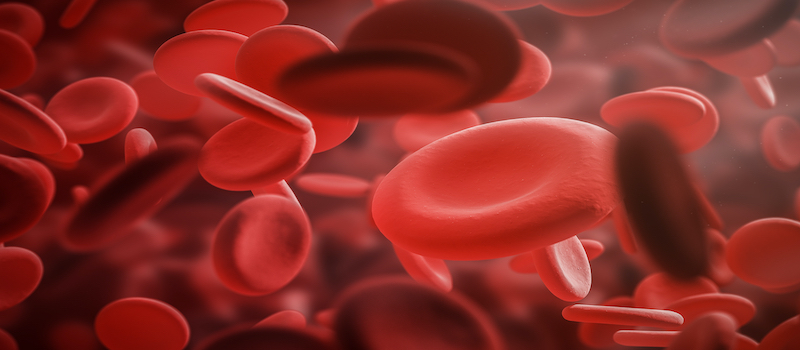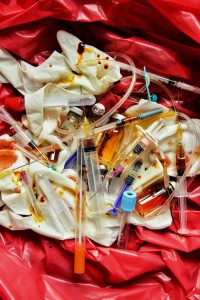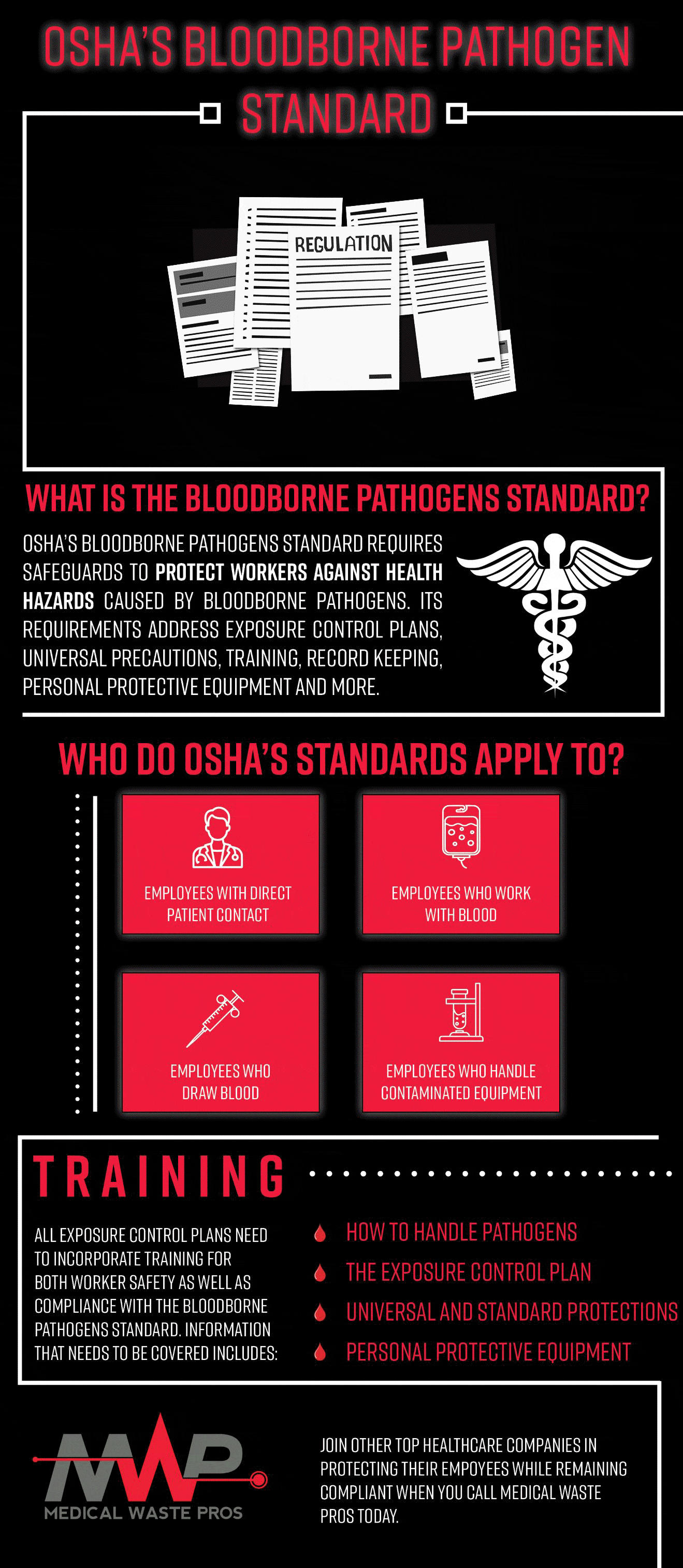What Is the OSHA Bloodborne Pathogens Standard

Designed to protect employees from the health hazards in the medical industry, OSHA’s Bloodborne Pathogens standard incorporates a number of safeguards to prevent occupational exposure to pathogens including Hepatitis B (HBV), Human Immunodeficiency Virus (HIV), and other potentially infectious materials (OPIMs).
Learn more in this video or the transcription below about not only what OSHA’s Bloodborne Pathogens standard is, its past amendments, the safeguards it includes, who it applies to, and how to ensure you’re staying compliant, but also some of its background information like examples and a definition of what a bloodborne pathogen is.
Video Transcription
What Is the Bloodborne Pathogens Standard?
As amended by the Needlestick Safety and Prevention Act of 2000, OSHA’s Bloodborne Pathogens standard lays out a wide range of safeguards designed to protect employees from exposure to infectious materials like blood, body fluids, unfixed human tissues, and other potentially infectious materials (OPIMs).
The Bloodborne Pathogens standard requires using a combination of protections including:
- Exposure control plans
- Universal and standard precautions (UP/SP)
- Vaccinations
- Personal protective equipment (PPE)
- Annual employee training
What Is the Needlestick Safety and Prevention Act?
 Since sharps injuries are still a serious and recurring issue in healthcare today, the Needlestick Safety and Prevention Act was added to OSHA’s Bloodborne Pathogens standard in 2000.
Since sharps injuries are still a serious and recurring issue in healthcare today, the Needlestick Safety and Prevention Act was added to OSHA’s Bloodborne Pathogens standard in 2000.
The Needlestick Safety and Prevention Act is designed for implementing sharps-specific protections, including:
- Using needleless injection devices
- Adopting sharps with engineered protections
- Maintaining a sharps injury log
What Are Bloodborne Pathogens?
Bloodborne pathogens are infectious organisms in blood that can cause disease in humans if they’re exposed to them. Types of pathogens include:
- Hepatitis B (HBV)
- Hepatitis C (HCV)
- Human Immunodeficiency Virus (HIV)
- OPIMs (Other Potentially Infectious Materials)
What Are OPIMs?
 There are three main categories of other potentially infectious materials:
There are three main categories of other potentially infectious materials:
Body Fluids
- Semen
- Vaginal secretions
- Cerebrospinal fluid
- Synovial fluid
- Pleural fluid
- Pericardial fluid
- Peritoneal fluid
- Amniotic fluid
- Body fluids contaminated with blood
Unfixed Tissues/Organs
- Tissues and organs from humans living or dead (not including dead skin)
Contaminated Materials
- Cell or tissue cultures containing HIV
- Organ cultures
- Cultures and other solutions containing HIV or HBV
Where Does OSHA’s Bloodborne Pathogens Standard Apply?
The Bloodborne Pathogens standard applies to all employees who may be reasonably anticipated to contact blood or other pathogens, but to be more specific there are four main groups of workers who employers will need to provide protections for:
- Employees with direct patient contact
- Employees who draw blood
- Employees who work with blood and other fluids
- Employees who handle contaminated medical equipment
How to Ensure Compliance With the Bloodborne Pathogens Standard

Taking steps like using personal protective equipment (PPE) to reduce the risk of bloodborne pathogens exposure in the workplace is important both for employee protection as well as compliance with OSHA’s Bloodborne Pathogens standard.
Besides PPE though, compliance also requires implementing an exposure control plan with details on other employee protections like vaccinations, engineering and work practice controls, and annual employee training.
Implementing Universal, Standard, and Transmission-Based Precautions
The Bloodborne Pathogens standard includes three key approaches to infection control—universal, standard, and transmission-based precautions.
Universal Precautions (UP)
Initially implemented in the 1980s, UP is an approach to infection control where blood and specific body fluids are considered infectious. While UP is included in the Bloodborne Pathogens standard, it’s no longer used on its own.
Standard Precautions (SP)
Introduced in 1996, SP adds more precautions to UP to protect workers from pathogens in not only blood and specific fluids, but also in OPIMs and other body fluids where UP doesn’t apply. SP requirements include PPE use, safe injection practices, and safe contaminated equipment management.
Transmission-Based Precautions (TBP)
TBP adds on to SP with extra protections for managing contact, droplet, and airborne-transmissible diseases. The different TBP types used vary depending on what’s known about a patient’s infection.
OSHA’s Requirements for Reducing Bloodborne Pathogen Exposure Risks
OSHA’s standards for reducing exposure risks include:
- Implementing a formal exposure control plan (ECP)
- Conducting annual employee training
- Using standard precautions (SP) during patient care
- Using personal protective equipment (PPE)
- Washing hands after patient care, removing PPE, or contacting OPIMs
- Using safer sharps and/or needleless devices
- Implementing controls like labeled containers for safely handling and disposing sharps
- Using red containers labeled as “infectious waste” with a biohazard symbol on them to dispose blood and OPIMs
- Ensuring all employees who are at risk receive hepatitis B vaccinations
- Implementing a post-exposure evaluation plan to follow up on any employee exposures to blood and OPIMs
Stay Prepared With Employee Training
 All exposure control plans need to incorporate employee training both for worker safety as well as compliance with the Bloodborne Pathogens standard.
All exposure control plans need to incorporate employee training both for worker safety as well as compliance with the Bloodborne Pathogens standard.
Information to cover during training includes:
- How to safely handle and dispose bloodborne pathogens
- The organization’s exposure control plan
- Universal and standard precautions (UP/SP)
- Personal protective equipment (PPE)
- Hazard communication practices
- The organization’s post-exposure follow-up plan
OSHA requires all employees receive annual training on the Bloodborne Pathogens standard no matter if they’ve already done it before or they’re being trained for the first time.
Are You In Line With OSHA’s Bloodborne Pathogens Standard?
Medical Waste Pros partners with a nationwide network of medical waste disposal and compliance training providers to help ensure you’re staying compliant with OSHA’s Bloodborne Pathogens standard.
For free quotes on sharps and infectious waste disposal services or compliance training services for the Bloodborne Pathogens standard, simply fill out the form to your right or give us a call at (888) 755-6370 today.











